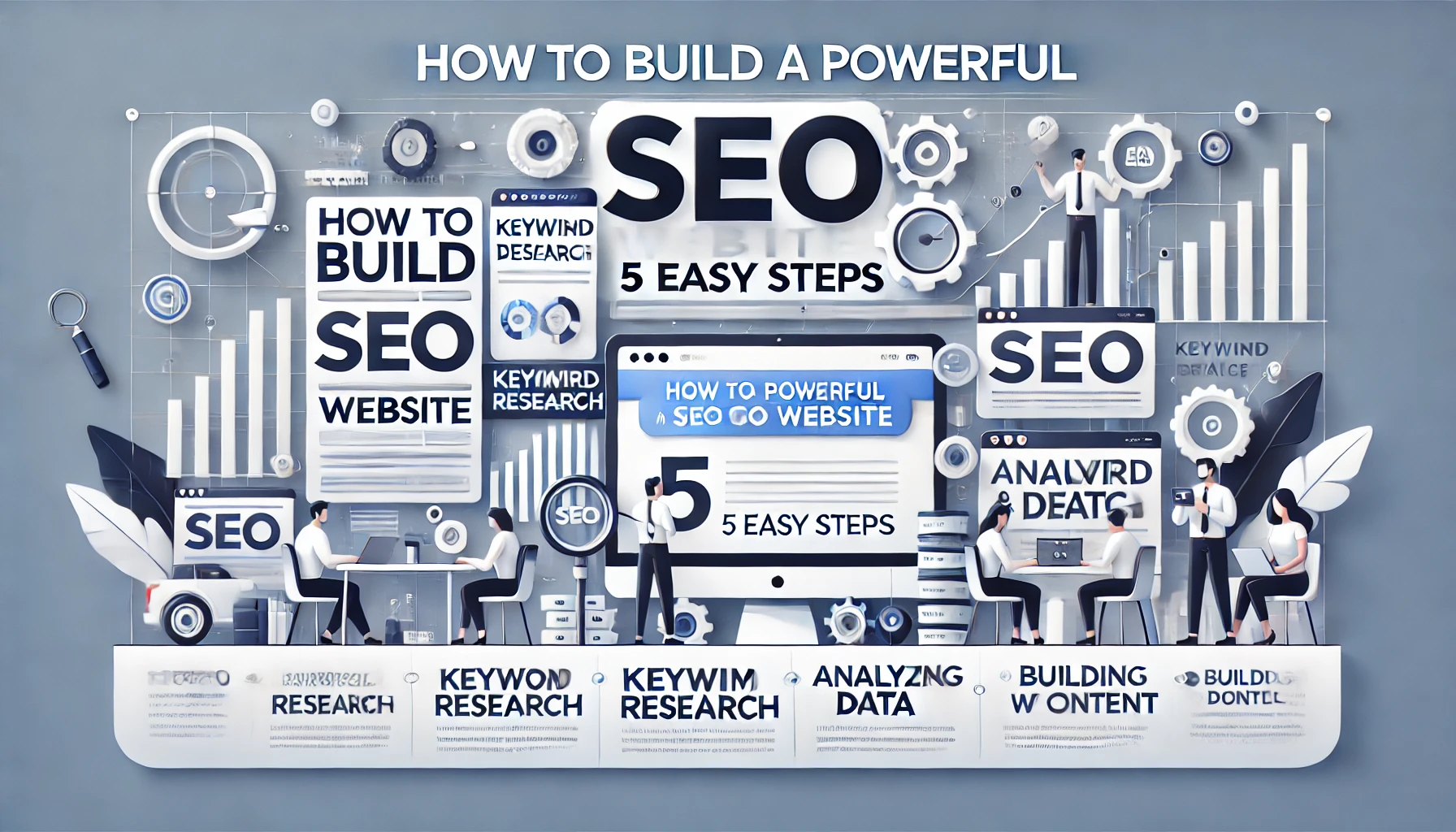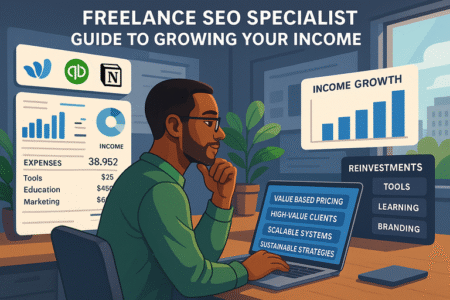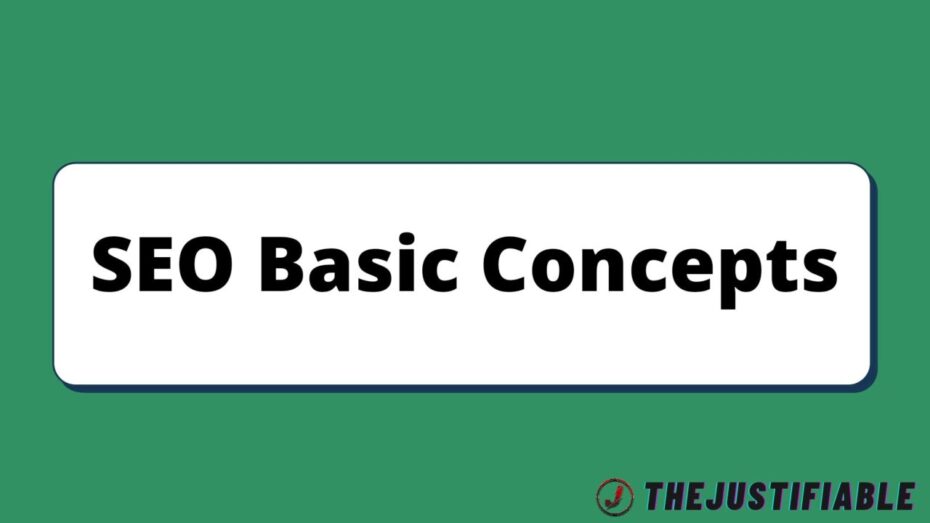Table of Contents
Are you struggling to improve your website’s visibility on search engines? Do you want to know how to build a powerful SEO website that attracts traffic and ranks higher?
In this guide, we will answer all these questions and more by walking you through five easy steps that can transform your website into a search engine magnet.
1. Choose A Reliable Platform For Building Your SEO Website
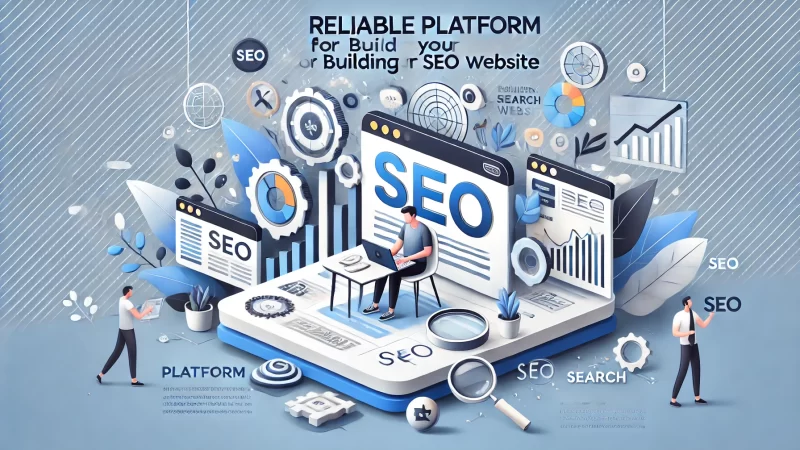
Building a strong SEO website starts with selecting the right platform. Your choice will impact everything from site speed to SEO capabilities, making it a critical first step. A reliable platform ensures that your website performs well and ranks high.
Understand The Importance Of SEO-Friendly Website Builders
An SEO-friendly website builder provides built-in tools and features that help optimize your site. These features make it easier to manage meta tags, URLs, and responsive designs. I recommend choosing a platform that simplifies these tasks and enhances your SEO potential.
SEO-friendly builders often come with templates that are easy to optimize. They are designed to be fast, secure, and mobile-friendly. Using such a builder can save you time while improving your site’s search engine performance. I find it useful to evaluate the builder’s SEO tools before committing.
Most importantly, a good website builder integrates with popular SEO plugins. These plugins can automate many SEO tasks, including keyword optimization and content analysis. I suggest prioritizing platforms with such integration for greater flexibility and efficiency in managing SEO.
Security features are another essential aspect of SEO-friendly platforms. I believe that website security enhances user trust and contributes to better SEO rankings. Always ensure your platform offers SSL certification to keep your site secure and compliant with search engine standards.
Factors To Consider When Selecting An SEO Website Platform
When choosing an SEO platform, consider factors like ease of use, scalability, and support for customization. I suggest looking for a platform that allows you to easily modify SEO elements. This ensures long-term success as your site grows.
Another critical factor is loading speed. A slow platform negatively impacts your SEO performance. I suggest testing the platform’s speed and responsiveness to ensure it meets search engine expectations and delivers a smooth user experience.
Mobile responsiveness is a must when selecting a platform. Search engines prioritize mobile-friendly sites, so I advise ensuring that the platform is optimized for mobile devices. This will help boost your rankings and attract more visitors.
Finally, consider whether the platform offers analytics tools. Being able to track your website’s SEO performance is crucial. I suggest choosing a platform that integrates with Google Analytics or offers its own analytics features to monitor progress.
How To Ensure Your CMS Supports SEO Best Practices
Your CMS should support essential SEO practices like meta tag customization, keyword optimization, and schema markup. I recommend using a CMS that allows you to edit meta titles and descriptions for every page. This flexibility helps in boosting your site’s visibility.
The CMS should also support clean, structured URLs. I believe well-organized URLs improve both user experience and SEO. Choose a CMS that makes it easy to create keyword-rich, descriptive URLs for all your pages.
Look for built-in tools that automate SEO tasks. For example, I find automatic sitemap generation extremely helpful for indexing your site. Having a CMS that handles these technical aspects will save time and ensure consistency across your website.
Finally, ensure your CMS integrates with popular SEO plugins like: Squirrly. These plugins can offer keyword suggestions, content analysis, and performance tracking. I’ve found that using these tools alongside a well-designed CMS can significantly boost SEO performance.
The Role Of Mobile Optimization In Building An SEO Website
Mobile optimization is crucial for ranking well in search engines. I’ve noticed that search engines like Google prioritize mobile-friendly websites, especially for local searches. Without mobile optimization, your site will struggle to rank competitively.
A responsive design is key to mobile optimization. I recommend using a platform that adjusts automatically to different screen sizes. This helps in creating a seamless experience for users on all devices, boosting engagement and reducing bounce rates.
Consider how fast your site loads on mobile devices. I find that slow load times can hurt both your SEO and user retention. Optimizing images, minimizing code, and using fast hosting can significantly improve your mobile performance.
Test your website on various mobile devices. I believe testing is essential to identify potential issues and improve your site’s mobile experience. Regularly checking your site ensures it remains optimized and competitive in mobile search rankings.
2. Optimize Your SEO Website’s On-Page Elements Effectively
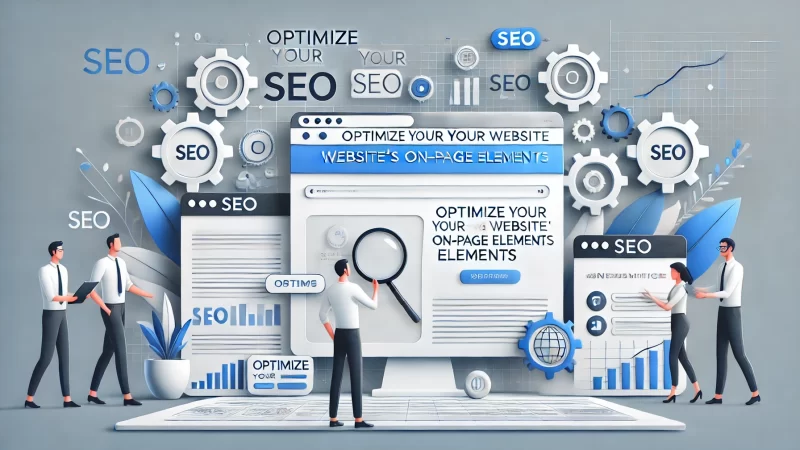
On-page optimization is the foundation of any successful SEO website. By focusing on elements like meta tags, header tags, and URL structures, you can significantly improve your site’s search visibility and attract targeted traffic.
Mastering Meta Titles And Descriptions For SEO Impact
Meta titles and descriptions are crucial for attracting clicks from search engine results pages (SERPs). I recommend writing concise and compelling meta titles that include your primary keyword. This will help your SEO website rank higher and get noticed.
Descriptions should be informative and entice users to click. I believe that using power words and a clear call-to-action can improve click-through rates. Make sure the description accurately reflects the content on the page to enhance user experience.
Keep meta titles between 50-60 characters. This ensures that search engines display the full title. I’ve noticed that shorter titles often get cut off in SERPs, which can negatively affect your website’s visibility and click rates.
Use your focus keyword naturally in both the title and description. I find that this not only helps with ranking but also makes your content more relevant to the searcher’s intent. Avoid overstuffing keywords, as it can lead to penalties.
How To Optimize Header Tags To Enhance SEO Website Ranking
Header tags play a significant role in structuring your content for both readers and search engines. I advise using H1 tags for main titles and H2, H3 tags for subheadings. This structure helps search engines understand the hierarchy of your content.
Including keywords in your header tags is a powerful way to improve SEO. I recommend placing your primary keyword in the H1 and secondary keywords in H2 and H3 tags. This helps search engines quickly grasp what your page is about.
Don’t forget about readability. I find that well-organized content with clear headers is easier to navigate. This improves user engagement, which in turn can boost your SEO ranking by reducing bounce rates and increasing time spent on the page.
Lastly, avoid overloading your page with too many header tags. I suggest keeping the structure clean and easy to follow. Proper use of headers can make your content more digestible and improve its chances of ranking well in search results.
The Importance Of Using Targeted Keywords In Content Creation
Using targeted keywords strategically throughout your content is essential for SEO. I recommend starting by researching relevant keywords that match your audience’s search intent. This ensures that your content resonates with what users are searching for.
Distribute your keywords naturally throughout the text. I find that forced keyword placements disrupt the flow of the content. By using synonyms and related phrases, you can maintain readability while still optimizing for SEO.
Place your primary keyword in the first 100 words of the page. I suggest also including it in the conclusion. This helps reinforce your page’s relevance to search engines and keeps your content focused on the topic.
Monitor keyword density to avoid penalties. I think keeping it around 1-2% ensures that your content is optimized without appearing spammy. Tools like Rank Math can help you track and maintain an ideal keyword density.
Implementing Proper URL Structures For Better SEO Results
Well-structured URLs make it easier for search engines to crawl and index your website. I recommend creating short, descriptive URLs that contain your focus keyword. This not only improves SEO but also enhances the user experience.
Avoid using special characters and unnecessary numbers in URLs. I find that clean, simple URLs rank better and are more likely to be clicked by users. Use hyphens to separate words, as search engines prefer this format for readability.
Ensure that each page has a unique, keyword-rich URL. I suggest reviewing your site’s URL structure regularly to ensure consistency and optimization. This will help search engines understand your content better and rank it accordingly.
Monitor the performance of your URLs. I’ve found that tools like Google Search Console can help identify any issues with URL indexing or crawling. Regular checks ensure your site is performing at its best and remains optimized for search engines.
How To Improve User Experience Through Image Optimization
Optimizing images can significantly enhance both user experience and SEO. I recommend using descriptive alt text for each image, which helps search engines understand the content and context of your visuals. This can improve your SEO rankings, especially for image searches.
Compress your images to reduce file size without compromising quality. I believe fast-loading images can help improve page speed, which is a critical ranking factor. Slow-loading pages often lead to higher bounce rates and lower search engine rankings.
Use relevant file names for your images. I find that naming images with keywords related to the page’s content can improve SEO. This simple step can make a big difference in how search engines perceive and rank your site.
Ensure that your images are responsive. I recommend testing them on different screen sizes to make sure they look good on both desktop and mobile devices. Responsive images enhance user experience and contribute to better mobile SEO performance.
3. Build A Strong Technical SEO Foundation For Your Website
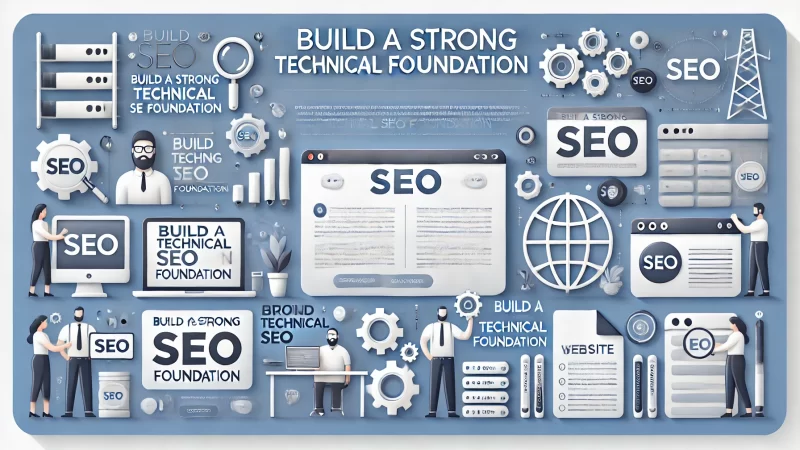
Building a strong technical SEO foundation is essential for long-term success. It ensures that search engines can easily crawl and index your website. Focusing on site speed, sitemaps, security, and indexing can dramatically improve your site’s search rankings.
Why Site Speed Matters For A High-Performing SEO Website
Site speed plays a crucial role in both user experience and SEO. I recommend improving load times to keep visitors engaged. Fast websites rank higher because search engines prioritize pages that offer quick, seamless browsing experiences.
Visitors are likely to leave a site if it takes more than a few seconds to load. I’ve learned that faster sites have lower bounce rates, which helps improve rankings. Regularly check your site speed to ensure optimal performance.
I suggest using tools like Google PageSpeed Insights to measure and enhance site speed. Compressing images, minimizing code, and using a content delivery network (CDN) can significantly reduce load times and boost performance.
Caching is another effective way to improve speed. By storing frequently accessed data, I’ve noticed websites load faster, enhancing both user satisfaction and SEO. Implement caching plugins or server-side caching for best results.
How To Use XML Sitemaps And Robots.txt Files For SEO Benefits
XML sitemaps help search engines understand your website’s structure. I recommend submitting your sitemap to Google Search Console to ensure all your important pages are indexed. This helps search engines find and crawl your content faster.
Sitemaps act as a roadmap for search engines, highlighting your most important content. I’ve found that this makes it easier for search engines to prioritize key pages. Regularly update your sitemap to reflect new pages and changes.
A robots.txt file is equally essential for guiding search engine crawlers. I suggest using it to block search engines from accessing pages you don’t want indexed, like admin areas. This ensures search engines focus on your valuable content.
Be cautious when editing your robots.txt file. I’ve heard of sites unintentionally blocking important pages, which can hurt SEO. Always double-check your file to ensure it’s properly configured and not restricting access to key pages.
The Importance Of Website Security And HTTPS For SEO
Website security is not just about protecting data—it also influences your SEO. I believe that using HTTPS (Hypertext Transfer Protocol Secure) is critical for both security and rankings. Google favors secure websites, which can lead to better search visibility.
HTTPS ensures that any data exchanged between your website and users is encrypted. This makes it harder for hackers to intercept information. I suggest purchasing an SSL certificate, as it’s the easiest way to enable HTTPS on your site.
I’ve noticed that websites with HTTPS tend to have higher user trust, which can improve engagement and conversions. Users are more likely to interact with secure sites, further boosting your site’s SEO performance.
Switching to HTTPS can also improve your site’s speed. Secure, encrypted websites are generally faster, and as mentioned earlier, speed plays a big role in SEO. I recommend making the switch if you haven’t already.
How To Ensure Proper Indexing For Your SEO Website
Proper indexing ensures that search engines can crawl and rank your pages effectively. I suggest submitting your site to Google Search Console to monitor indexing. This tool allows you to see which pages are indexed and which might have issues.
Use the “URL Inspection” tool in Google Search Console to check individual pages. I find that this helps identify any problems, such as indexing errors or blocked pages, that may affect your SEO performance.
Ensure that your website has clean and descriptive URLs. I’ve found that search engines favor well-structured URLs, which makes indexing easier. Avoid using special characters or overly long URLs, as these can confuse crawlers.
Lastly, create a clear and concise internal linking structure. I suggest linking to important pages throughout your content to help search engines discover and index them faster. Proper internal linking strengthens the overall crawlability of your website.
4. Develop High-Quality Content To Power Your SEO Website
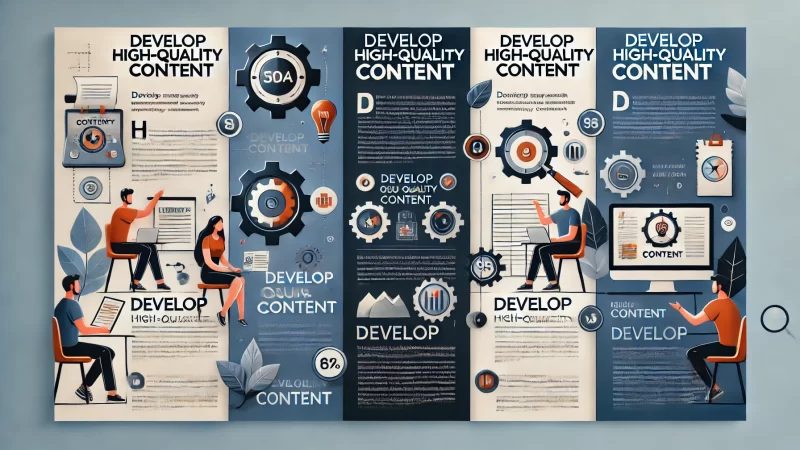
Creating high-quality content is essential for driving traffic and building authority. Content that’s optimized for SEO and written with the user in mind helps improve rankings and engagement. Focus on content that provides value to both readers and search engines.
Creating Engaging Content That Attracts SEO Traffic
Engaging content keeps visitors on your site longer, which boosts your SEO rankings. I believe writing content that answers specific user queries can increase relevance and visibility in search results. Ensure your content is well-researched and informative.
Incorporate your primary keyword naturally throughout the content. I find that overstuffing keywords can hurt readability and SEO. Instead, focus on answering user intent, which will help you rank higher for related searches.
Use short paragraphs and bullet points to break up content. I’ve noticed that this format improves readability and keeps users engaged, leading to longer page visits. Easy-to-read content encourages visitors to explore more pages.
Add multimedia elements like videos, images, and infographics. I recommend incorporating these visuals to make your content more engaging and shareable. Interactive content can enhance user experience and improve your SEO metrics.
How To Incorporate LSI Keywords For Better SEO Rankings
LSI (Latent Semantic Indexing) keywords are related terms that provide context to your content. I suggest using them to help search engines understand the overall topic of your page. This improves your chances of ranking for related search queries.
When writing, think of related phrases that naturally fit your content. I’ve found that including these keywords helps avoid repetition while still maintaining relevance. They add depth to your content and support your primary keyword.
LSI keywords also reduce the risk of keyword stuffing. By varying your language, you can create a more natural flow in your writing. I find that this enhances user experience and helps prevent penalties from search engines.
Use keyword tools to find relevant LSI terms. I recommend tools like SEMrush or Ahrefs to discover keywords that align with your content. This helps in identifying new opportunities for ranking without over-relying on a single keyword.
Optimizing Content With Visuals To Boost SEO Engagement
Visual content can significantly enhance user engagement. I suggest incorporating high-quality images, infographics, and videos to complement your written content. These elements make your pages more interactive and help reduce bounce rates.
Optimize your visuals by compressing images to ensure fast load times. I’ve noticed that large image files can slow down your site, which negatively affects your SEO. Use alt tags with keywords to make your visuals searchable by engines.
Videos are especially engaging. I recommend embedding relevant videos that add value to your content. I’ve seen that pages with video content often have higher engagement rates, which can help improve SEO rankings.
Visuals can also help with social sharing. I’ve heard that content with appealing visuals is more likely to be shared on social platforms. This increases your reach and generates backlinks, both of which contribute to better SEO.
The Role Of Internal Linking In Strengthening Your SEO Website
Internal linking helps distribute link equity across your website, boosting SEO. I recommend linking to relevant pages within your site to help search engines understand the relationship between content. It also keeps users engaged by encouraging further reading.
Create a logical structure for internal links. I suggest linking to cornerstone content or pages you want to rank higher. These links guide search engines and users to the most important parts of your site.
Internal links also help users navigate your site more easily. I find that well-placed links keep visitors on your site longer, reducing bounce rates. The more time users spend on your site, the better your SEO performance.
Regularly audit your internal links. I advise checking for broken links or outdated content that needs updating. Keeping your internal linking structure fresh and functional will maintain a strong SEO foundation for your site.
How Content Freshness Contributes To Long-Term SEO Success
Search engines prioritize fresh content. I recommend regularly updating your pages to keep them relevant. Fresh content signals to search engines that your site is active and trustworthy, improving your chances of ranking higher.
Add new information or insights to existing content. I’ve found that updating old posts with new data or trends keeps your content current and valuable. This can help maintain or improve rankings over time.
Create evergreen content that remains relevant. I suggest focusing on topics that won’t become outdated quickly. This ensures that your content continues to attract traffic and rank well for years to come.
Use date markers to show when content was last updated. I believe this boosts credibility with users and search engines alike. A regularly updated blog or page gives the impression that your website is well-maintained and authoritative.
5. Leverage Off-Page SEO Strategies To Strengthen Your Website
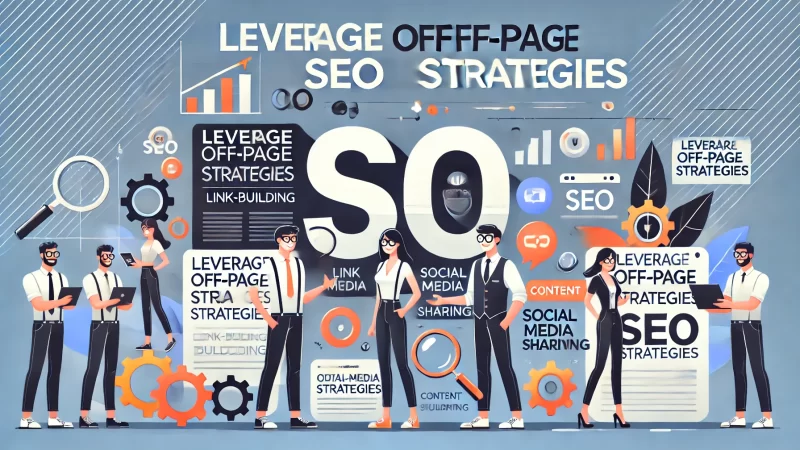
Off-page SEO is crucial for building your website’s authority and improving rankings. Tactics like backlink building, social signals, and guest blogging can enhance your visibility and help search engines view your site as more credible.
Building High-Quality Backlinks For A More Powerful SEO Website
Backlinks act as endorsements from other websites, improving your SEO. I suggest focusing on acquiring high-quality backlinks from authoritative sites. These links signal to search engines that your website is trustworthy and valuable.
Create shareable content to attract backlinks naturally. I’ve found that infographics, research papers, and comprehensive guides often get linked back to by other sites. The more valuable your content, the higher the chance of earning backlinks.
Reach out to industry influencers. I recommend connecting with bloggers or experts in your field who might be interested in linking to your content. Building relationships can lead to valuable backlinks that improve your SEO.
Monitor your backlink profile regularly. I suggest using tools like Ahrefs or Moz to track your backlinks and ensure their quality. High-quality backlinks will boost your rankings, while low-quality ones can harm your SEO efforts.
How Social Signals Influence Your Website’s SEO Performance
Social signals, such as likes, shares, and comments, can indirectly affect SEO. I suggest promoting your content on social media to increase visibility. Although not a direct ranking factor, high engagement can lead to more traffic and backlinks.
Share your content on multiple platforms. I find that engaging with your audience on social media increases the likelihood of your content being shared. This exposure can result in organic backlinks, which are valuable for SEO.
Encourage social sharing with clear calls-to-action. I recommend adding social share buttons to your pages to make it easy for users to distribute your content. The more shares you get, the higher your chances of attracting backlinks.
Track social performance. I advise using social media analytics tools to monitor which content performs best. This can help you refine your strategy and create more shareable content that drives SEO success.
The Benefits Of Guest Blogging For Your SEO Website
Guest blogging is an effective way to build backlinks and increase your site’s authority. I suggest contributing to reputable websites in your niche to earn high-quality backlinks. These links can improve your SEO rankings and drive referral traffic.
Target blogs with high domain authority. I find that getting published on well-known blogs not only boosts your SEO but also enhances your credibility. The more authoritative the site, the greater the impact on your rankings.
Write valuable and insightful content. I recommend focusing on topics that provide real value to the audience. High-quality guest posts are more likely to be shared, helping you earn more backlinks and grow your SEO presence.
Include a link back to your site within the content or author bio. I’ve found that strategic linking can drive traffic to your site and improve SEO performance. Always follow the guest blog’s linking guidelines to ensure compliance.
Why Local SEO Can Boost Your Website’s Visibility
Local SEO is essential if your business targets a specific geographic area. I suggest optimizing your website for local searches to attract nearby customers. Google prioritizes local businesses, especially for location-based queries, which can improve your visibility.
Claim your Google My Business profile. I recommend filling out your business details, adding images, and collecting reviews. This helps you rank higher in local searches and provides valuable information to potential customers.
Include local keywords in your content. I find that mentioning your city or region in key areas of your site helps improve local rankings. Ensure your contact details, including address and phone number, are consistent across all platforms.
Encourage customer reviews. I’ve noticed that positive reviews can improve your local SEO by signaling to search engines that your business is reputable. Respond to reviews to show that you’re engaged with your audience.
How To Monitor Off-Page SEO Results And Make Improvements
Tracking your off-page SEO performance is crucial for long-term success. I suggest using tools like Google Analytics and Kissmetrics to monitor backlinks, social signals, and other metrics. Regularly assessing these results helps you fine-tune your SEO strategy.
Set clear goals for your off-page SEO efforts. I recommend establishing targets for the number of backlinks, social shares, and guest posts you aim to achieve. This gives you a roadmap for success and helps you track progress.
Analyze your competitors’ off-page SEO. I find that studying how your competitors build backlinks and gain visibility can offer insights for your own strategy. Use SEO tools to uncover their link-building tactics and identify new opportunities.
Make adjustments based on performance data. If certain strategies aren’t working, I suggest revising them or trying new approaches. Off-page SEO is an ongoing process, and regular monitoring ensures that your efforts are effective.
Frequently Asked Questions (FAQs)
What is an SEO website?
An SEO website is a site optimized for search engines, ensuring it ranks higher in search results, making it more visible to users.
Why is choosing the right website builder important for SEO?
The right website builder can provide essential SEO tools like meta tag management, fast load times, and mobile optimization, impacting your site’s ranking.
How do meta tags affect SEO?
Meta tags, like titles and descriptions, help search engines understand your content, influencing how your site appears in search results.
What is keyword optimization in SEO?
Keyword optimization involves selecting and using relevant keywords in your content to help search engines match your site to user searches.
How does internal linking improve SEO?
Internal linking helps search engines index your pages and keeps users engaged by guiding them to relevant content, improving rankings.
Why is mobile optimization essential for SEO?
Mobile optimization ensures your site is accessible on all devices. Search engines prioritize mobile-friendly sites, which impacts rankings.
What are the best practices for writing meta titles and descriptions?
Use primary keywords, keep them concise, and ensure they are compelling to attract clicks from search engine results.
How does page load speed affect SEO?
Fast load times improve user experience and are favored by search engines, leading to better rankings.
What is on-page optimization in SEO?
On-page optimization includes techniques like optimizing headers, URLs, meta tags, and keyword placement to improve search visibility.
How do backlinks influence SEO rankings?
High-quality backlinks from authoritative sites signal trust to search engines, helping your site rank higher.
Why is HTTPS important for SEO?
HTTPS ensures a secure connection for users, which is a ranking factor for search engines, making secure sites more trustworthy.
How can schema markup improve SEO?
Schema markup helps search engines understand your content better, improving how your site appears in search results with rich snippets.
What role do images play in SEO?
Optimized images with descriptive alt text improve user experience, site speed, and visibility in image searches.
How can I monitor my website’s SEO performance?
Use tools like Google Analytics and Search Console to track metrics like traffic, keyword rankings, and site speed.
What is the importance of regularly updating content for SEO?
Fresh, updated content signals to search engines that your site is active, which can help maintain or boost rankings.


